AMD's latest Ryzen Threadripper 9000 series arrives with a familiar formula: massive core counts, eye-watering specs, and price tags to match. Built on the Zen 5 microarchitecture, these chips pack up to 64 cores and 128 threads, along with 80 lanes of PCIe 5.0 connectivity.
As with previous generations, the lineup is split in two: a high-end desktop (HEDT) range, simply called Threadripper 9000, and a workstation-class series known as Threadripper Pro 9000WX.
Our focus here is on the HEDT chips – relatively more accessible in price, though still far from affordable in the mainstream sense. The 24-core 9960X starts at $1,500, followed by the 32-core 9970X at $2,500, and the flagship 64-core 9980X at $5,000. For this review, we're putting the 9970X and 9980X through their paces. The 9960X will have to sit this one out.
In contrast to the standard Threadripper 9000 series, the Pro 9000WX models extend core counts up to 96 and offer broader platform capabilities – but at nearly $12,000 for the chip alone, they cater to a different class of buyer. These models also unlock access to 128 PCIe lanes and expanded memory configurations, assuming you pair them with the right motherboard.
Rather than explore all six Pro models, which we are not testing today, we will briefly outline where those chips fit in before turning our attention to AMD's HEDT flagships.
Threadripper Overview
Launched in late 2023, the Threadripper 7000 series introduced AMD's 4844-pin sTR5 socket, rendering previous TRX40 and sWRX8 motherboards incompatible. Alongside those chips came two chipsets: WRX90, built exclusively for Pro models, and TRX50, which supports both standard and Pro CPUs – though with functional compromises for the latter.
The key distinction between desktop and workstation Threadripper CPUs remains in PCIe bandwidth and memory channel support. A Pro CPU on a WRX90 board unlocks 128 PCIe 5.0 lanes and eight memory channels. Use the same chip on a TRX50 board, and you're limited to 80 lanes and quad-channel memory.
Threadripper 9000 CPUs can handle up to 2 TB of RAM using eight channels and 256 GB RDIMMs on WRX90 boards, or up to 1 TB on TRX50 boards via four channels. Both platforms support DDR5-6400 in single- or dual-rank configurations – an upgrade from the DDR5-5200 ceiling of the 7000 series.
It is also important to note that Threadripper does not support standard desktop DDR5. These platforms require registered memory (RDIMM, LRDIMM, or 3DS RDIMM), which is incompatible with the unbuffered DIMMs used by mainstream AM5 platforms.
For testing, AMD supplied a 128 GB kit of G.Skill's F5-6400R3239F32GQ4-T5N T5 Neo DDR5-6400 RDIMM memory. Yes, the name is a mouthful, but that is the specific kit we are using. Note that there are similar kits with slightly different part numbers.
The CPUs on Deck
The Threadripper 9980X is the top-tier model: 64 cores, 128 threads, and a configuration built from eight CCDs and a single IOD. It features 256 MB of L3 cache, 48 PCIe 5.0 lanes, 24 PCIe 4.0 lanes, and supports four memory channels. The base clock speed is 3.2 GHz, with a boost clock of 5.4 GHz. Like all Threadripper 9000 series CPUs, it has a TDP of 350 watts.
| Threadripper Pro 9995WX | $11,700 | 96 (192) | 2.5 GHz | 384 MB | 12 X CCD 1 X I/OD |
12 X 8 |
| Threadripper Pro 9985WX | $8,000 | 64 (128) | 3.2 GHz | 256 MB | 8 X CCD 1 X I/OD |
8 x 8 |
| Threadripper Pro 9975WX | $4,100 | 32 (64) | 4.0 GHz | 128 MB | 4 X CCD 1 X I/OD |
4 X 8 |
| Threadripper Pro 9965WX | $2,900 | 24 (48) | 4.2 GHz | 4 X 6 | ||
| Threadripper Pro 9955WX | $1,650 | 16 (32) | 4.5 GHz | 64 MB | 2 X CCD 1 X I/OD |
2 X 8 |
| Threadripper Pro 9945WX | TBA | 12 (24) | 4.7 GHz | 2 X 6 | ||
| Threadripper 9980X | $5,000 | 64 (128) | 3.2 GHz | 256 MB | 8 X CCD 1 X I/OD |
8 X 8 |
| Threadripper 9970X | $2,500 | 32 (64) | 4.0 GHz | 128 MB | 4 X CCD 1 X I/OD |
4 X 8 |
| Threadripper 9960X | $1,500 | 24 (48) | 4.2 GHz | 4 X 6 |
* All CPUs have a 5.4 GHz boost clock
** All CPUs have a 350W TDP
The Threadripper 9970X is essentially the 9980X cut in half, with four CCDs for a total of 32 cores and 64 threads. It offers 128 MB of L3 cache and is priced at $2,500. Since the TDP remains the same at 350 watts, the base clock is significantly higher at 4.0 GHz, while the boost clock remains at 5.4 GHz.
As for the 9960X – AMD's 24-core entry point into the series – we are not reviewing it today, but it rounds out the lineup with 48 threads and a $1,500 price tag.
Test System Specs
| CPU | Motherboard | Memory |
|
AMD Threadripper 9000 & 7000 Series |
Asus Pro WS TRX50-Sage WiFi [BIOS 1203] | G.Skill F5-6400R3239F32GQ4-T5N T5 Neo DDR5-6400 CL32-39-39-102 |
|
AMD Ryzen 9000 & 7000 Series |
Gigabyte X670E Aorus Master [BIOS F34b] | G.Skill Trident Z5 RGB 32GB DDR5-6000 CL30-38-38-96 |
| AMD Ryzen 5000 Series | MSI MPG X570S Carbon MAX WiFi [BIOS 7D52v1B1] | G.Skill Ripjaws V Series 32GB DDR4-3600 CL14-15-15-35 |
| Intel Core Ultra 200S | Asus ROG Maximus Z890 Hero [BIOS 1501] | G.Skill Trident Z5 CK 32GB DDR5-8200 CL40-52-52-131 |
| Intel 12th, 13th & 14th | MSI MPG Z790 Carbon WiFi [BIOS 7D89v1E] | G.Skill Trident Z5 RGB 32GB DDR5-7200 CL34-45-45-115 |
| Graphics Card | Power Supply | Storage |
| Asus ROG Strix RTX 4090 OC Edition | Kolink Regulator Gold ATX 3.0 1200W | TeamGroup T-Force GE Pro M.2 PCIe Gen5 NVMe SSD 4TB |
| GeForce Game Ready Driver 577.00 WHQL | ||
Now let us take a look at the test system specifications before we dive into benchmark results. We are using the Asus Pro WS TRX50-Sage WiFi motherboard, 128 GB of DDR5-6400 CL32 memory, and the GeForce RTX 4090. We have not yet updated our test data with the RTX 5090, but for most of this testing, the GPU is not a limiting factor.
For cooling, we are using the new Silverstone XE360-TR5 360 mm AIO cooler, a $380 solution designed specifically for the TR5 socket. Everything was assembled and tested in the excellent BeQuiet! Light Base 900 FX case.
Benchmarks
Cinebench 2024 Multi
First up is the Cinebench multi-core test, where the 9980X delivers an extremely impressive score of 6,632 points. This represents an 18% improvement over the previous-generation 7980X. That is a much larger gain than expected, especially considering the Zen 5-based 9700X was only 2% faster than the Zen 4-based 7700X, with the 9700X clocking just 2% higher.
In this case, the 9980X averaged 7% higher clock speeds than the 7980X, which accounts for some of the improvement. The rest appears to be the result of IPC gains.
So, the question then becomes, why are these apparent Zen 5 IPC gains not as evident when comparing the 9700X and 7700X?
Interestingly, the 9800X3D shows a 24% improvement over the 7800X3D. Previously, we speculated that reusing the same I/O die from the Zen 4 generation in Zen 5 desktop processors may have limited performance in many tests. However, the larger L3 cache of the 9800X3D likely helps offset the I/O bottleneck.
Supporting this theory is the fact that Threadripper CPUs use a completely different I/O die – much larger and capable of significantly more bandwidth. This could explain why the Zen 5 architecture appears more impressive in the Threadripper lineup. Of course, this is speculative, based on the evidence we have collected so far.
Returning to the 9980X, an 18% performance uplift is substantial. AMD reports a 16% gain in the same test, which is in the ballpark for what we're seeing here. The 32-core 9970X was slightly less impressive, showing an 11% increase compared to the 7970X. Still, that is a solid improvement.
Cinebench 2024 Multi Power
In terms of power consumption, the 9000 series is very similar to the 7000 series, which means efficiency has improved. Notably, compared to Intel's Core Ultra 9 285K, the 9980X consumed 45% more power but delivered 163% more performance.
Cinebench 2024 Single
We observed an 8 – 10% improvement in single-core performance with the new 9000 series Threadripper processors. This brings them roughly in line with Zen 4 performance for lightly threaded workloads.
While this is an interesting data point, it has limited practical value, given that the main purpose of a 32- or 64-core processor is to utilize a large number of cores.
Blender Open Data
Blender Open Data can eat up all those cores, and here the 9980X delivered a 13% improvement over the 7980X. The 9970X saw a more modest 6% gain over the 7970X. Compared to the 9950X3D, the 9970X was 85% faster in this test.
7-Zip File Manager Compression
In the 7-Zip File Manager compression test, the 9980X showed an 8% improvement over its predecessor, while the 9970X saw a 6% increase. These are modest gains, but considering that the 7700X outperformed the 9700X in earlier tests, the Threadripper CPUs are showing stronger results here.
7-Zip File Manager Decompression
In decompression performance, the 9980X was 12% faster than the 7980X, and the 9970X was 4% faster than the 7970X. So far, the 32-core model has shown less impressive gains.
Adobe Photoshop 2025
Adobe Photoshop 2025 represents a workload that is typically very lightly threaded, rarely benefiting from more than 8 cores. As a result, the Threadripper CPUs are heavily underutilized and perform poorly in this application.
Adobe Premiere Pro 2024
Adobe Premiere Pro can be quite CPU-intensive, though its demands vary depending on the workload. Using the Puget Systems benchmark, the 9970X was 11% faster than the 7970X, marking the largest gain we have seen for the 32-core model since the Cinebench results. Oddly, the 64-core 9980X was only 3% faster than its predecessor.
Shader Compilation
Threadripper CPUs are not designed or intended for gaming, and obviously you wouldn't buy one if you were primarily gaming – the 9800X3D is a significantly better gaming CPU that costs significantly less. But an interesting test we'll be adding to our CPU reviews is a "Shader Compilation" benchmark. For this example, we are using Dragon Age: The Veilguard.
In this test, the Core Ultra 9 285K completed the task in 166 seconds, while the 9800X3D was slightly slower at 173 seconds. Both were easily surpassed by the 9950X3D, which completed the task in just 116 seconds, reducing the compile time by 33% compared to the 9800X3D.
The Threadripper CPUs performed even better. Since this test utilizes up to around 32 cores at most, both the 9980X and 9970X delivered similar results, completing the task in just over 80 seconds. That makes them approximately 30% faster than the 9950X3D, which is an impressive result.
Shader Compilation, HWinfo
Here is a look at how the Shader Compilation benchmark behaves on the 9970X using HWiNFO. During shader verification, we observed an average clock speed of 5.0 GHz with an average core utilization of 59%. This translates to an average of 27 active cores, which explains why the 32-core and 64-core Threadripper CPUs produced nearly identical performance in this test.
Gaming Benchmarks
Here is a quick look at gaming performance, confirming that yes, you can game on these Threadripper CPUs. While performance is acceptable, it is far from the best possible gaming experience.
In some cases, such as Cyberpunk 2077, performance is noticeably poor. It remains playable, but clearly, gaming should not be a priority when choosing a Threadripper processor.
Operating Temperatures
Now let's take a look at the operating behavior of the 9970X and 9980X alongside the 7970X and 7980X in the Cinebench multi-core test. All processors were tested inside the BeQuiet! Light Base 900 FX case using the Silverstone XE360-TR5 360 mm AIO cooler.
The 9970X reached a peak operating temperature of 86°C, with an average operating frequency of 4.9 GHz. The previous-generation 7970X also peaked at 86°C but averaged a frequency of 4.7 GHz, meaning the Zen 5 model clocked 4% higher on average.
Switching to the 64-core models, the 9980X peaked at just 74°C, while the 7980X reached 82°C. The 9980X also maintained an average clock speed of 4.3 GHz compared to 4.0 GHz for the 7980X, giving the newer model an 8% frequency advantage.
Overclocking (PBO)
Out of curiosity, we enabled PBO to see how much we could improve Cinebench scores with a basic overclock. As expected, performance increased by 6%, reaching a score of 7,038 points.
PBO Power Draw
Of course, this was done without any voltage tuning, as that can compromise stability – something most professionals would want to avoid. Enabling PBO dramatically increased power consumption, pushing EPS12V rail draw to an extreme 492 watts. That is a 31% increase in power for just a 6% performance gain.
What We Learned
With Zen 5, AMD's Threadripper 9000 series builds steadily on the solid foundation laid by Zen 4. Platform compatibility remains intact, which is welcome news in an industry that often demands new everything for marginal gains. That said, we do not expect most current Threadripper 7000 owners to feel compelled to upgrade.
For newcomers to the platform, however, this is the Threadripper to get. The 9980X offers up to 18% better performance than its predecessor at the same price. The 9970X, while still powerful, delivers smaller generational gains and feels more incremental than transformative.
Intel's competing Xeon W9-3595X, a 60-core workstation processor priced north of $5,900, is technically in the same category, but that is where the comparison ends. At that price, it is not a desirable product, especially considering that it is slower than the 9980X – often much slower.
In Cinebench 2024, the Xeon scores around 3,800 points, trailing the 9980X by roughly 75%. AMD claims up to an 83% advantage in their press deck, but either way, Intel gets crushed in that match up, while also consuming more power and costing more.
AMD also reports performance gains of 92% in Autodesk Maya, 23% in Premiere Pro, 80% in After Effects, 108% in Corona, 68% in MATLAB, 41% in Chromium Compile, and 65% in Unreal Engine Compilation. These figures line up with benchmarks from Puget Systems, at least where results overlap, so we are confident in saying that Threadripper 9000 thoroughly outperforms the Intel competition.
We have been using the Threadripper 7980X on the Asus Pro WS TRX50-Sage WiFi for nearly two years. Every video published on the Hardware Unboxed channel during that time has been produced on this platform, so we have extensive hands-on experience with it. We are happy to report it's been rock solid.
That reliability stands in sharp contrast to the Threadripper 5000 series, particularly the ill-fated 5995WX, a chip that left us frustrated enough to abandon it altogether. We spoke at length about these issues in our Threadripper 7000 review, specifically the disappointing performance of the 5995WX.
Zen 4 brought redemption, and Zen 5 appears to be continuing that trajectory. The 7980X has delivered a near-flawless experience, and we expect the same from the 9980X, which we will be transitioning to as our new workhorse.

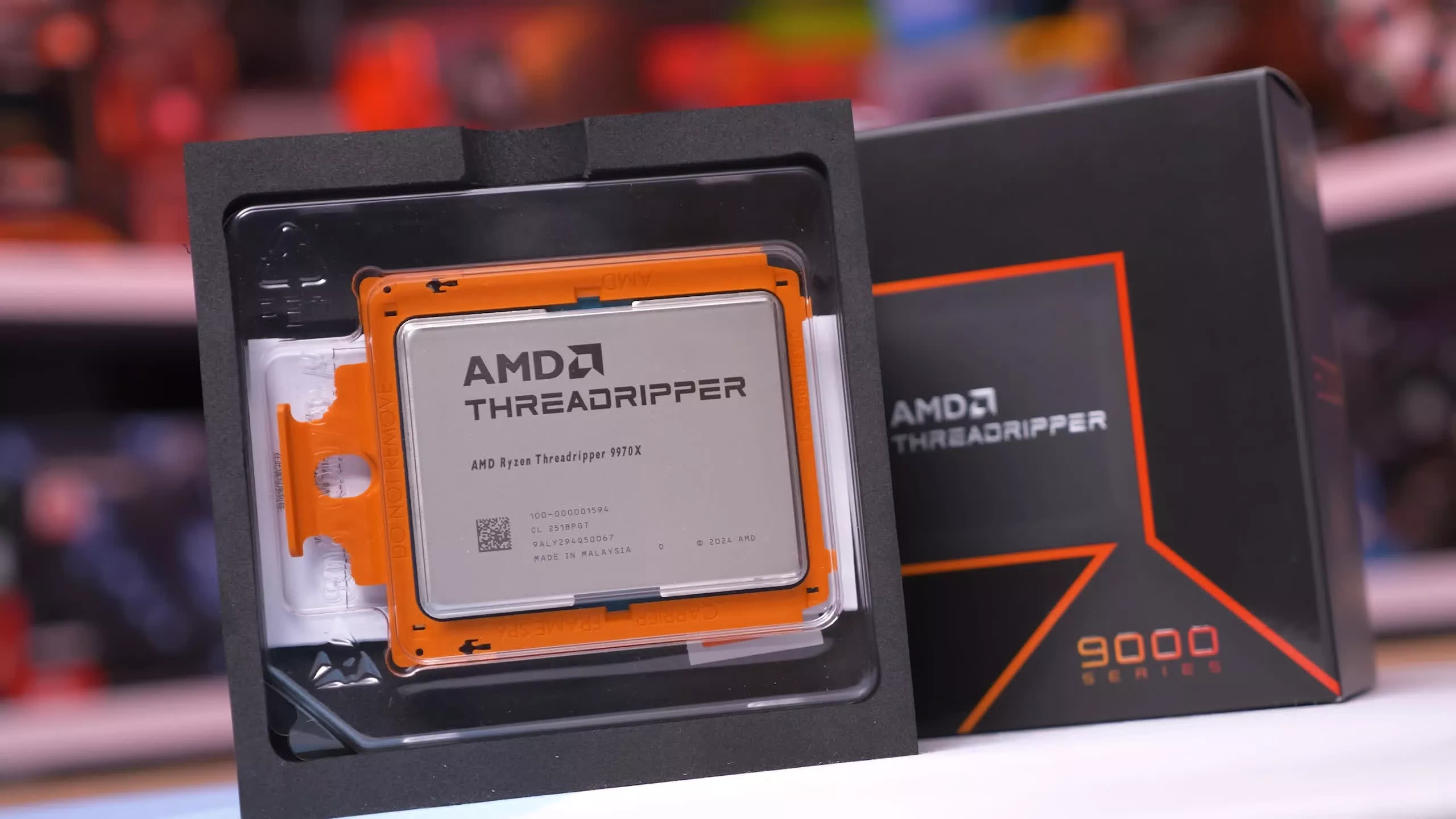
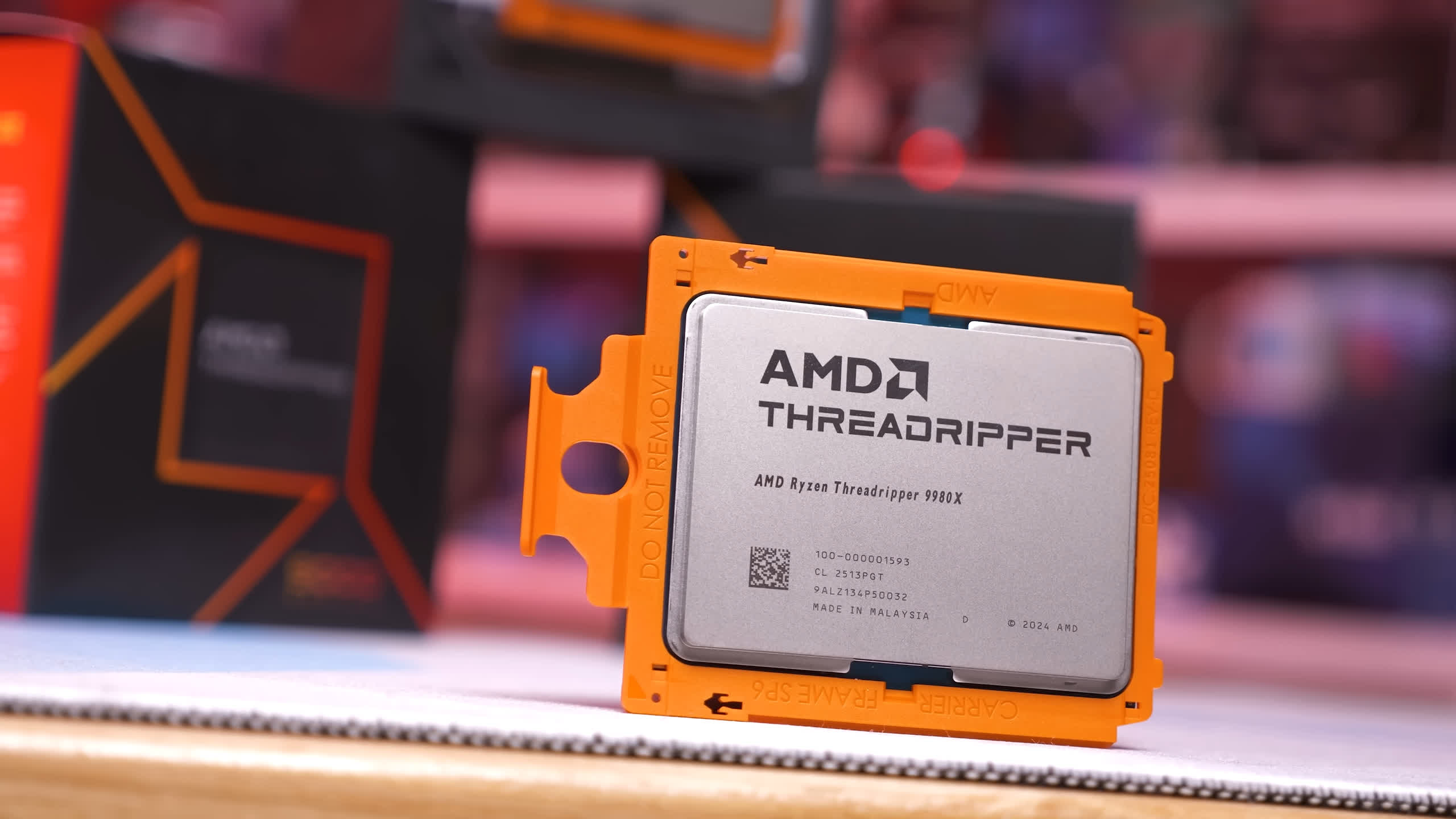

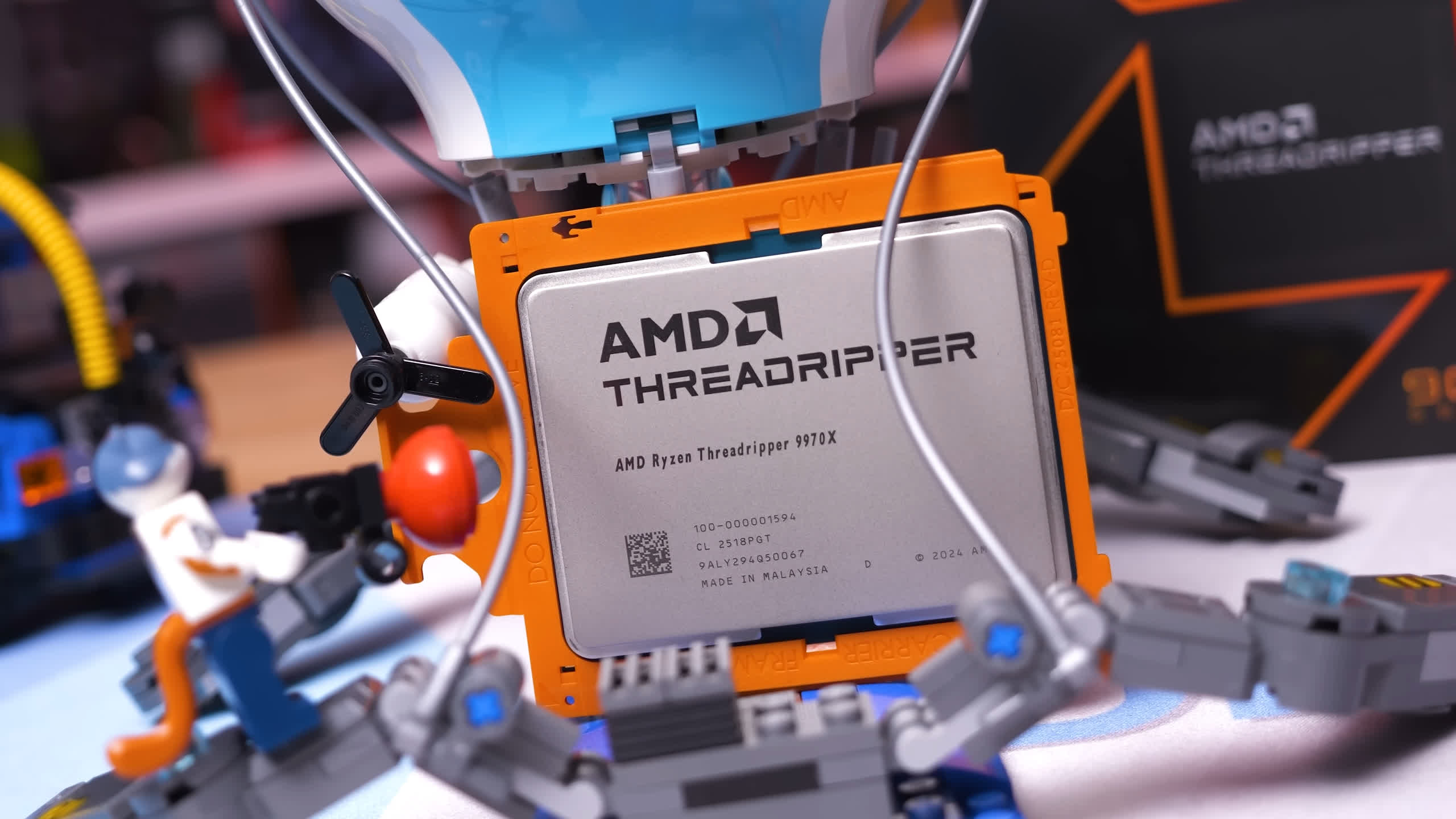
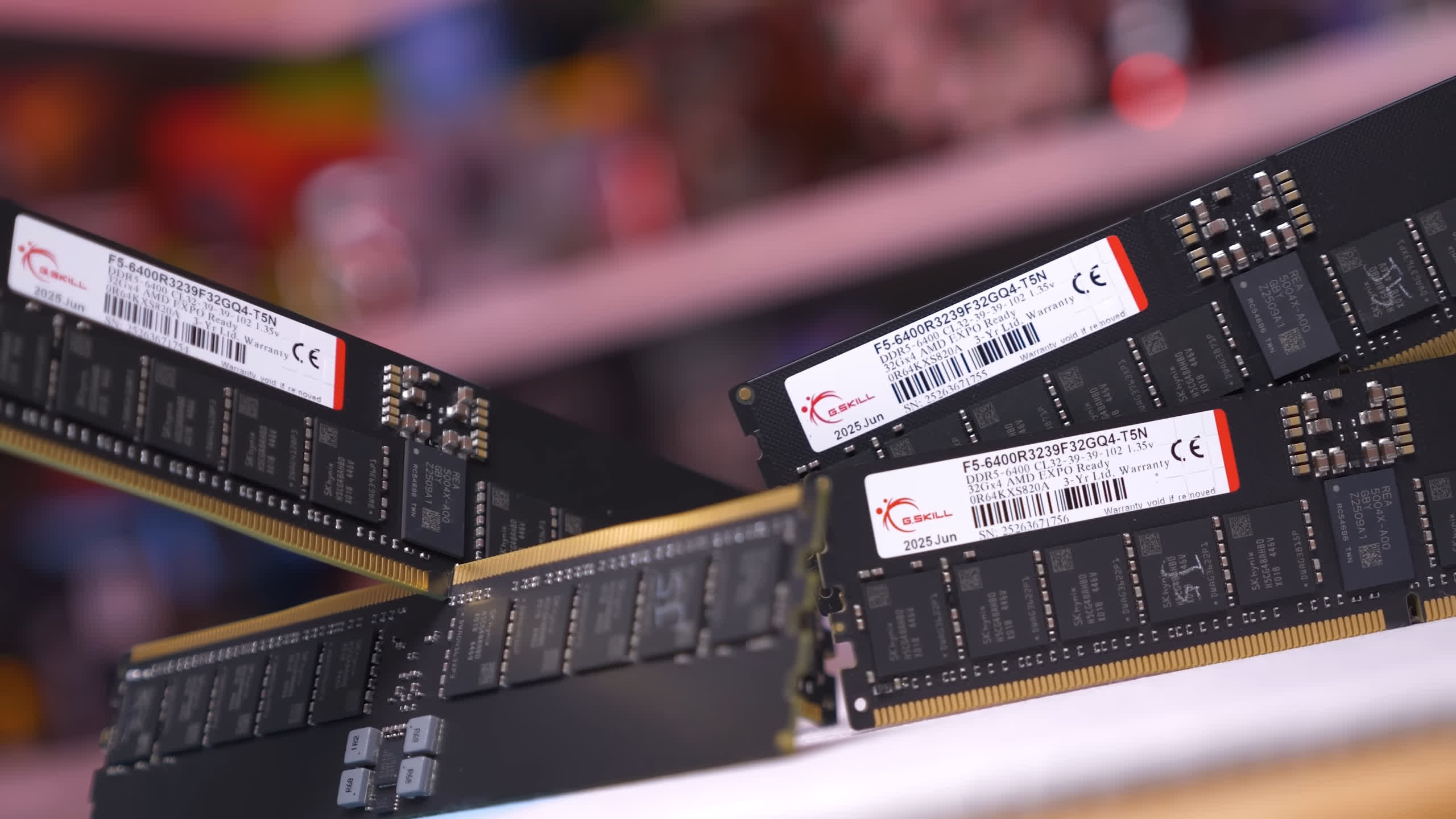

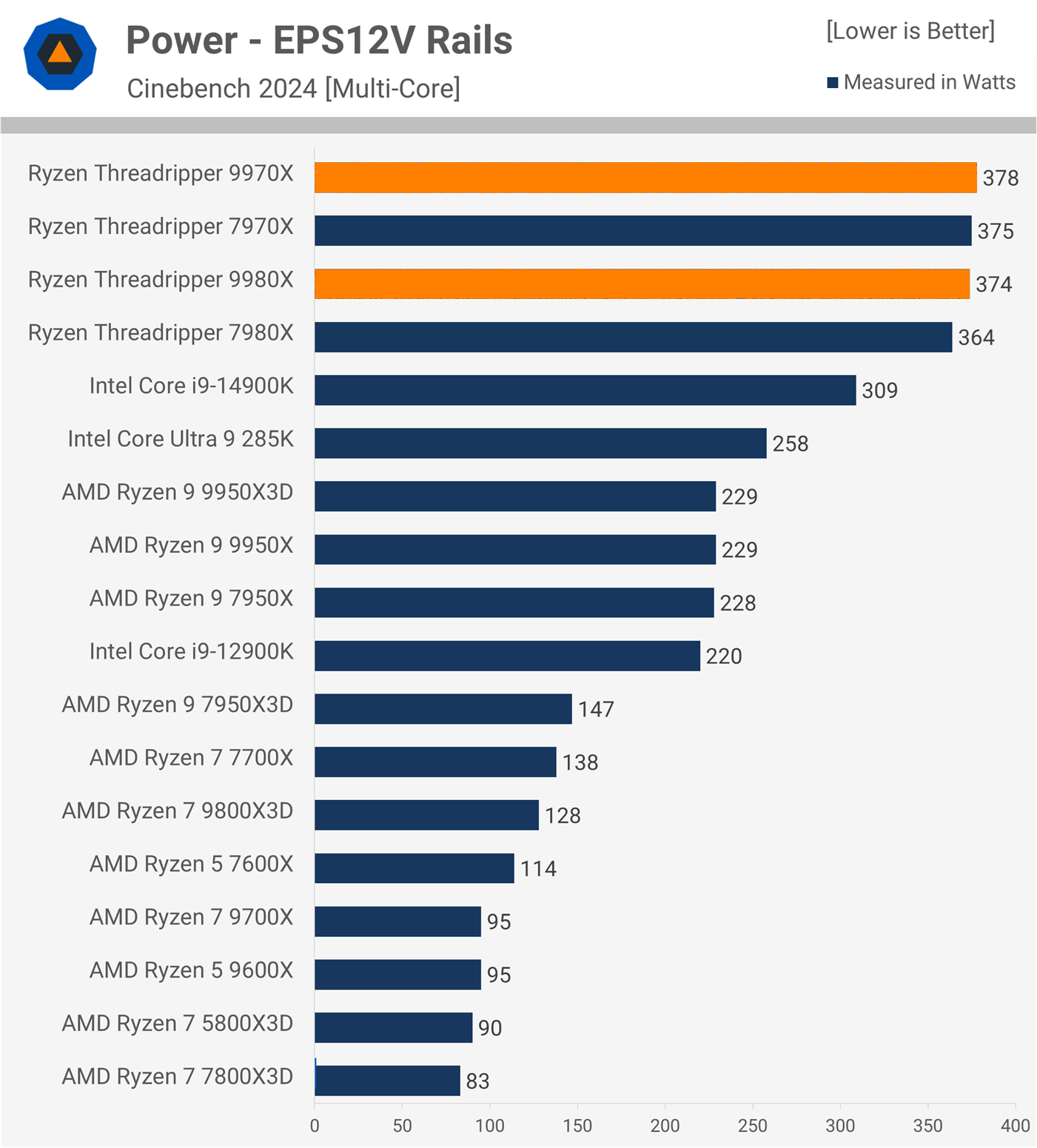
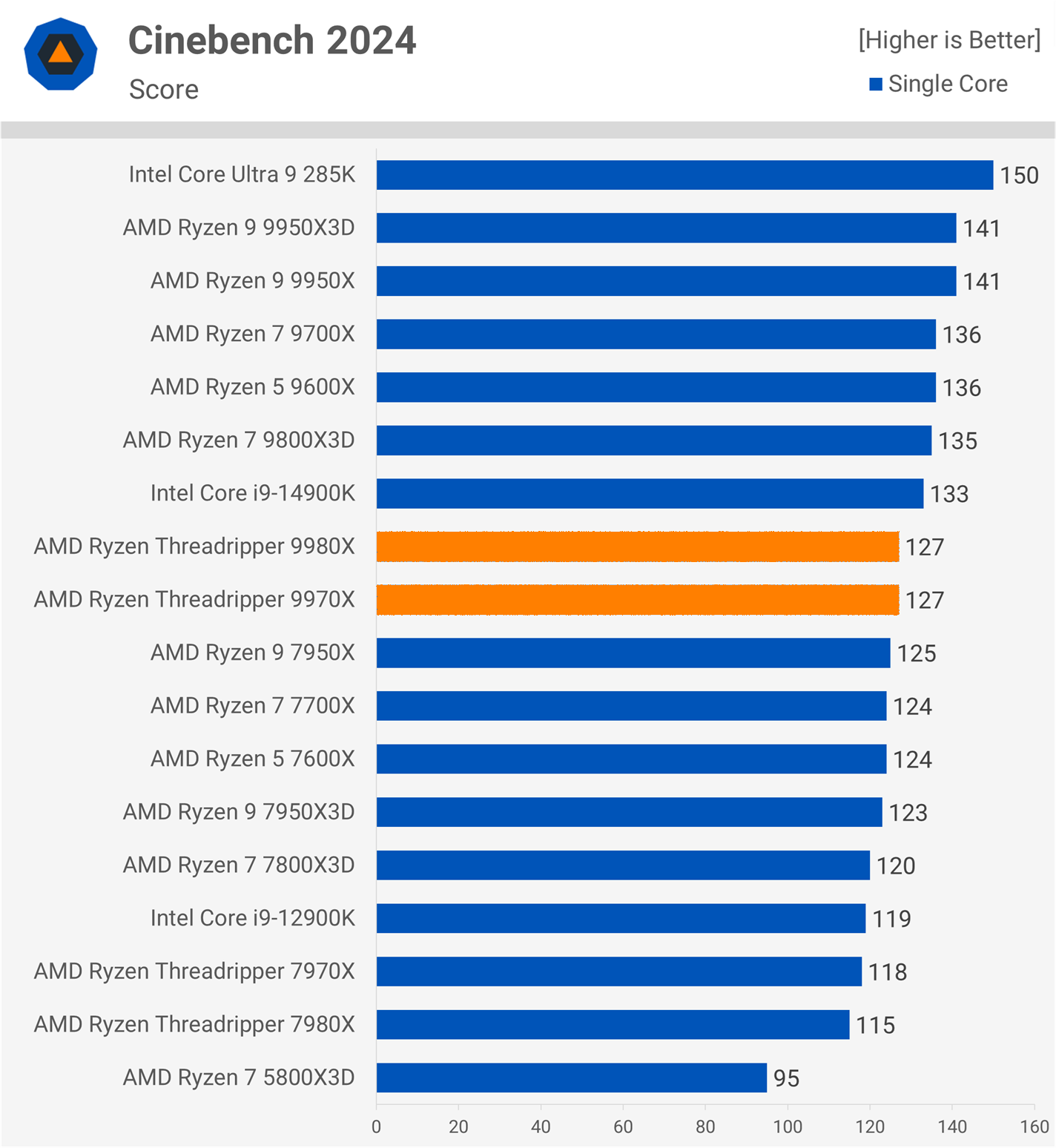
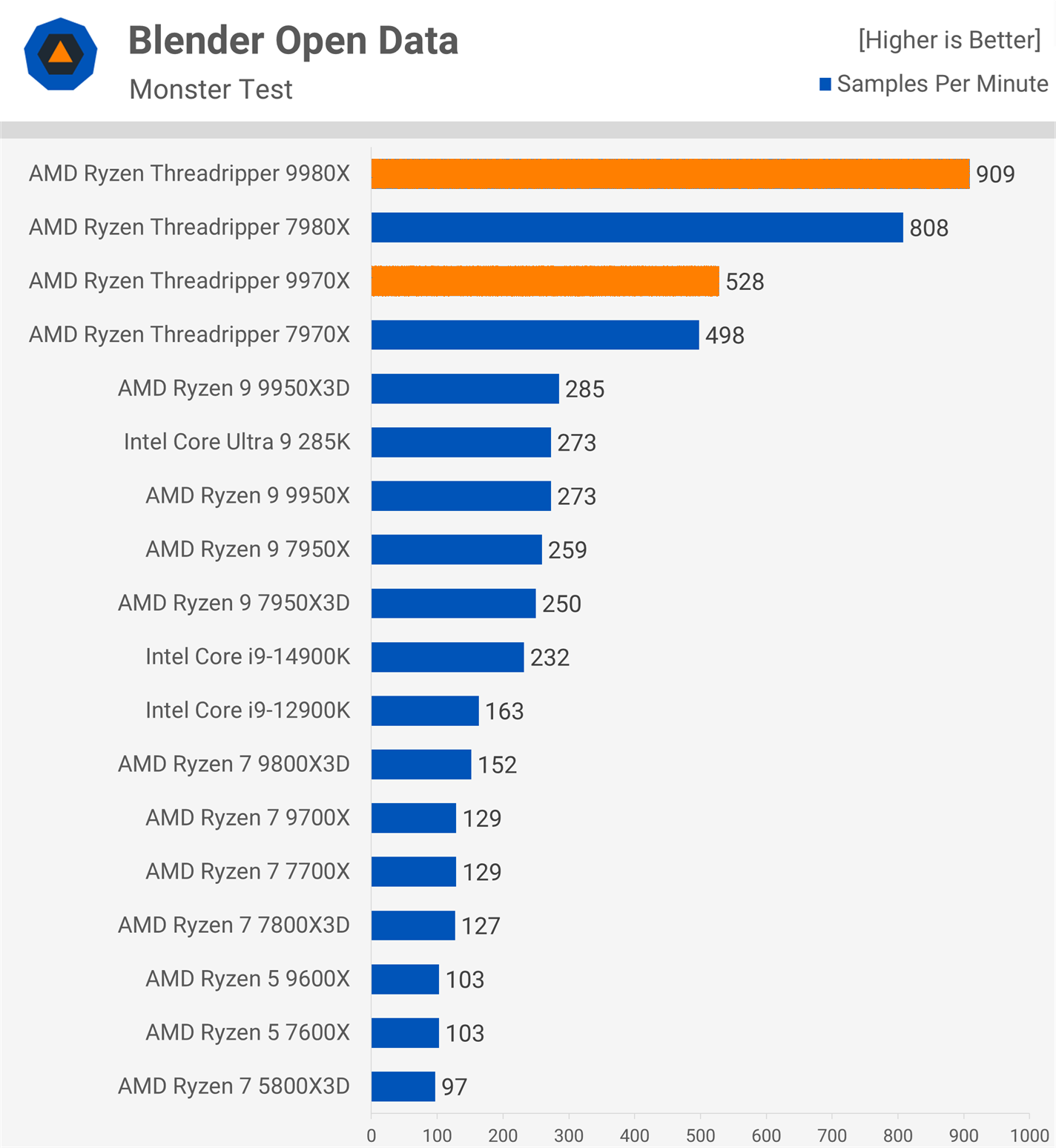
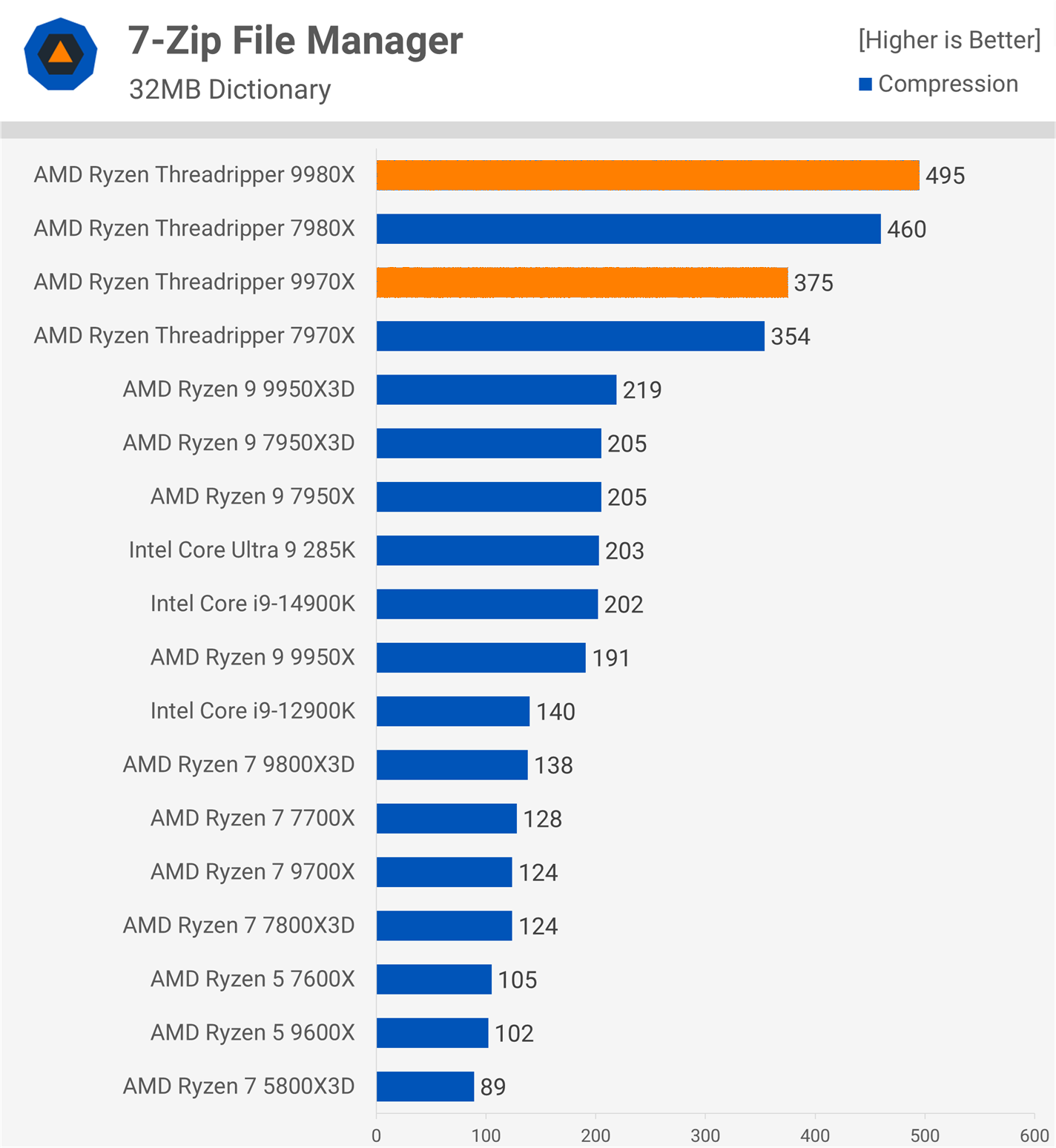
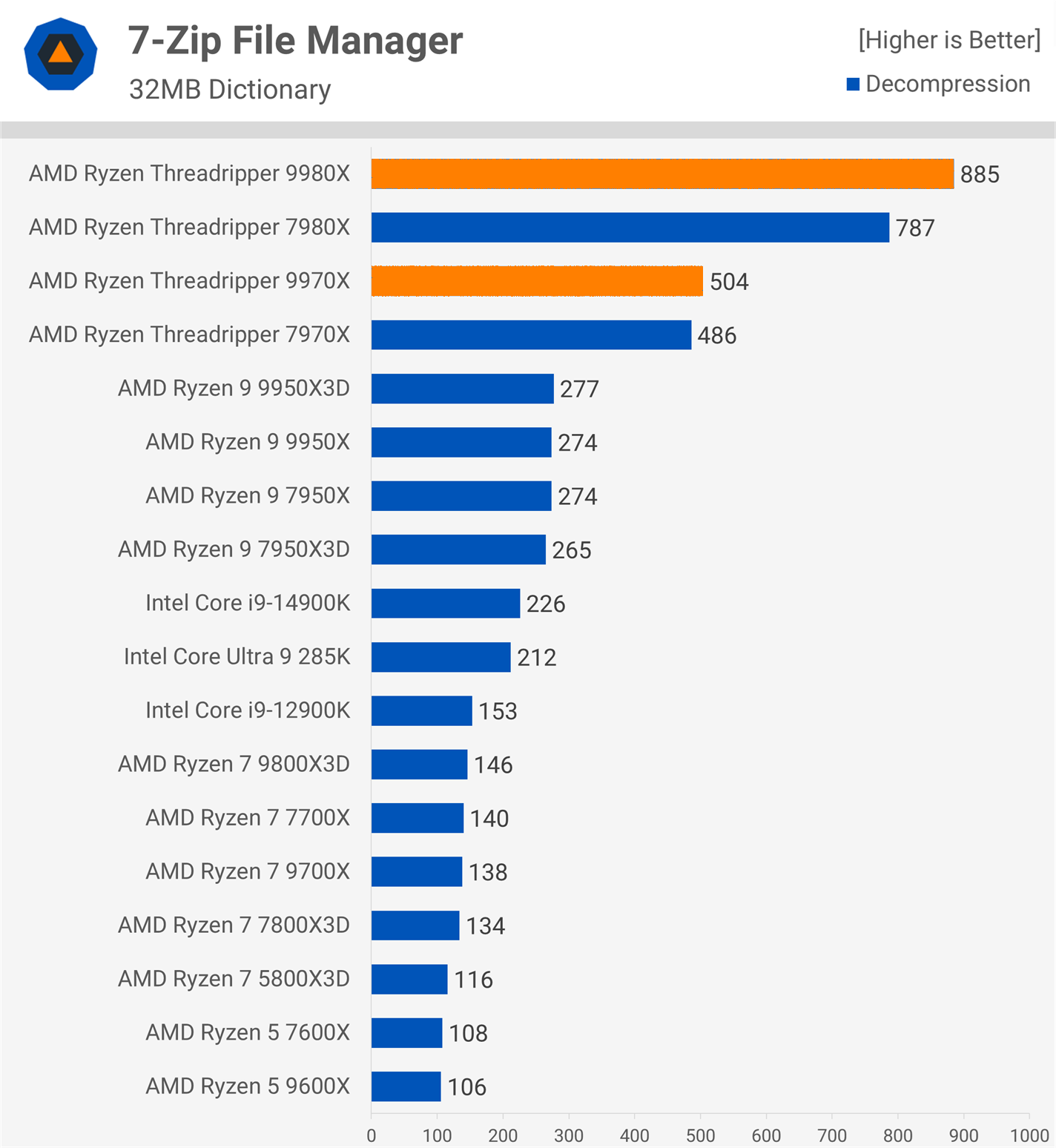
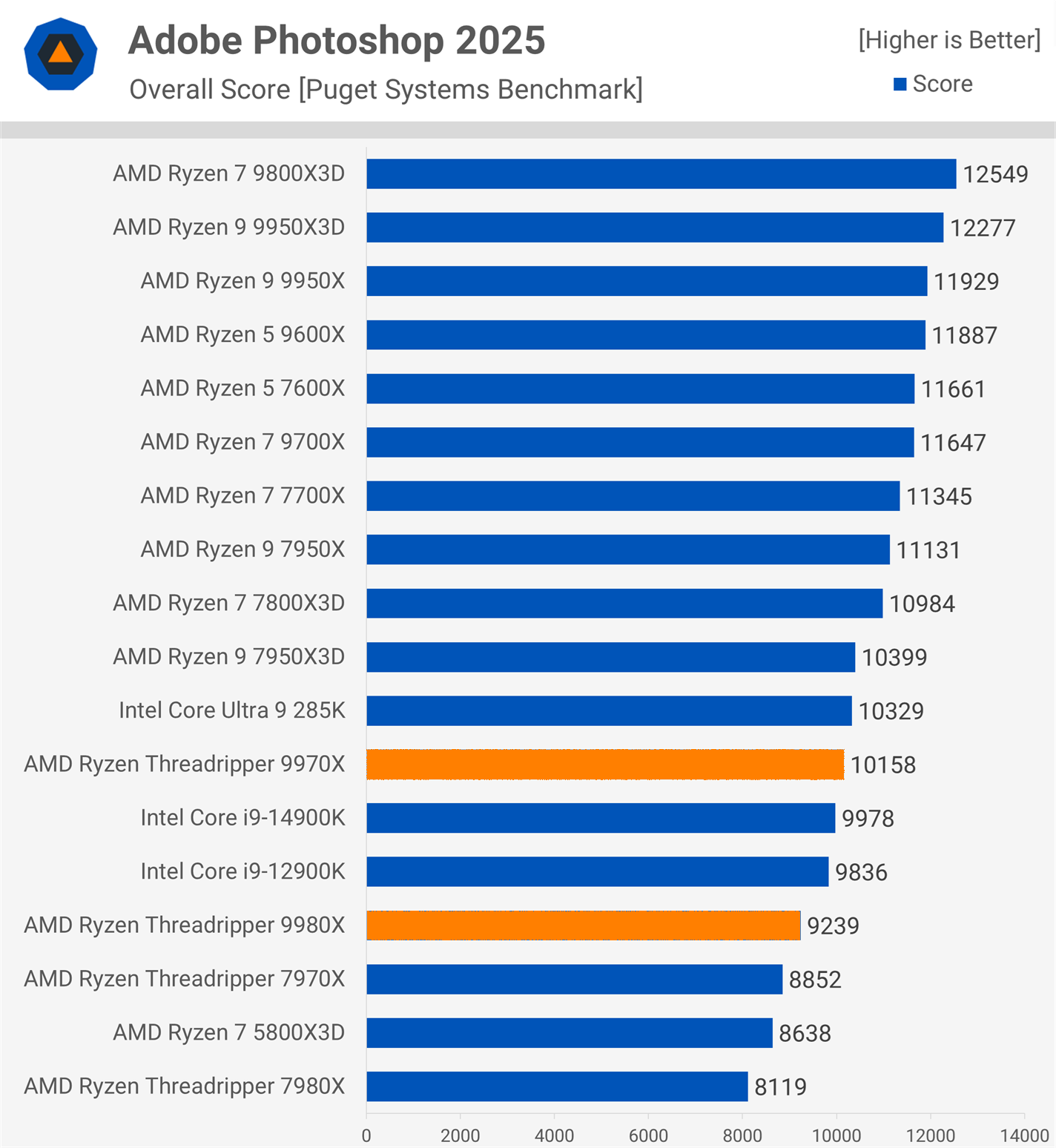
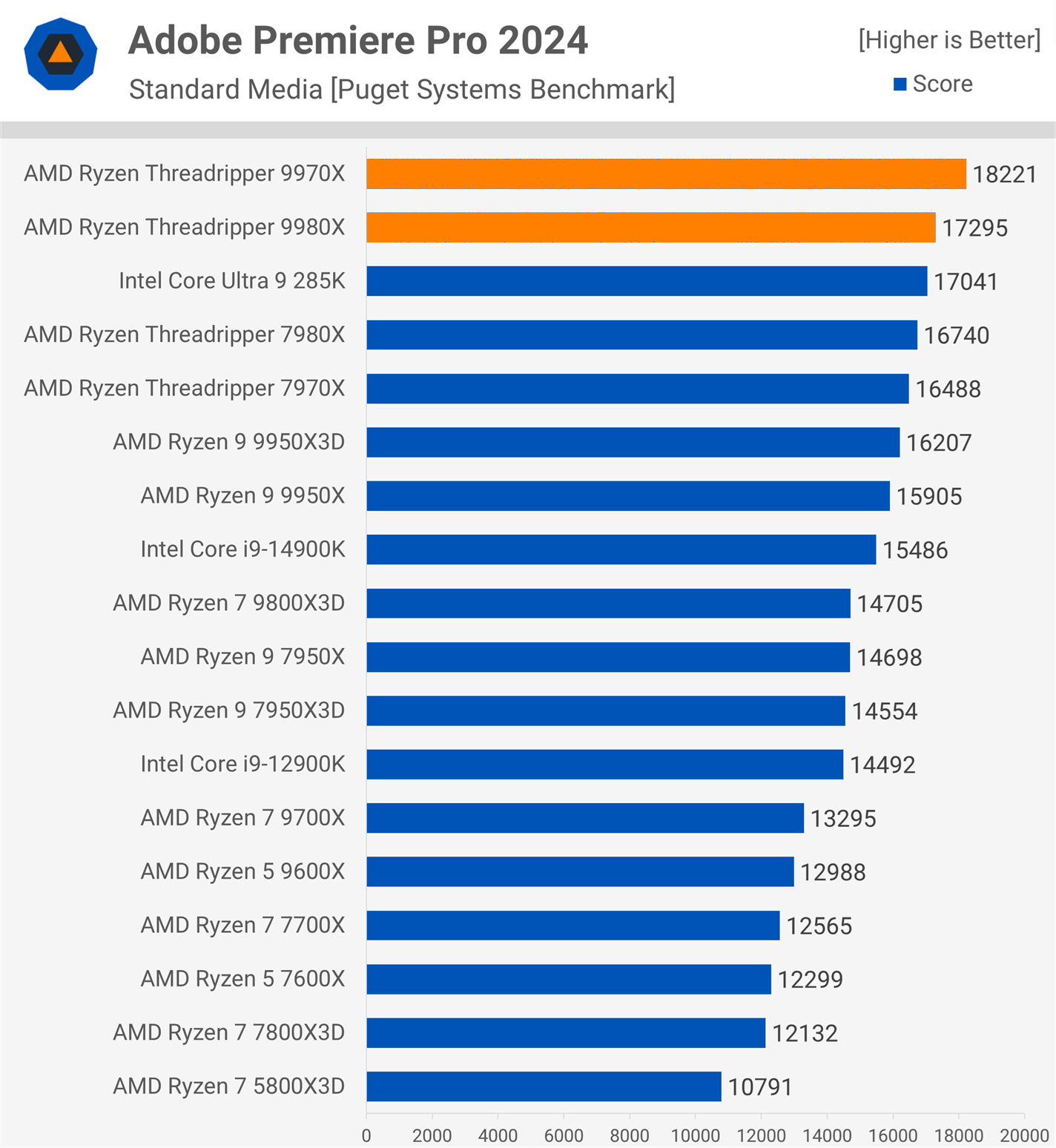
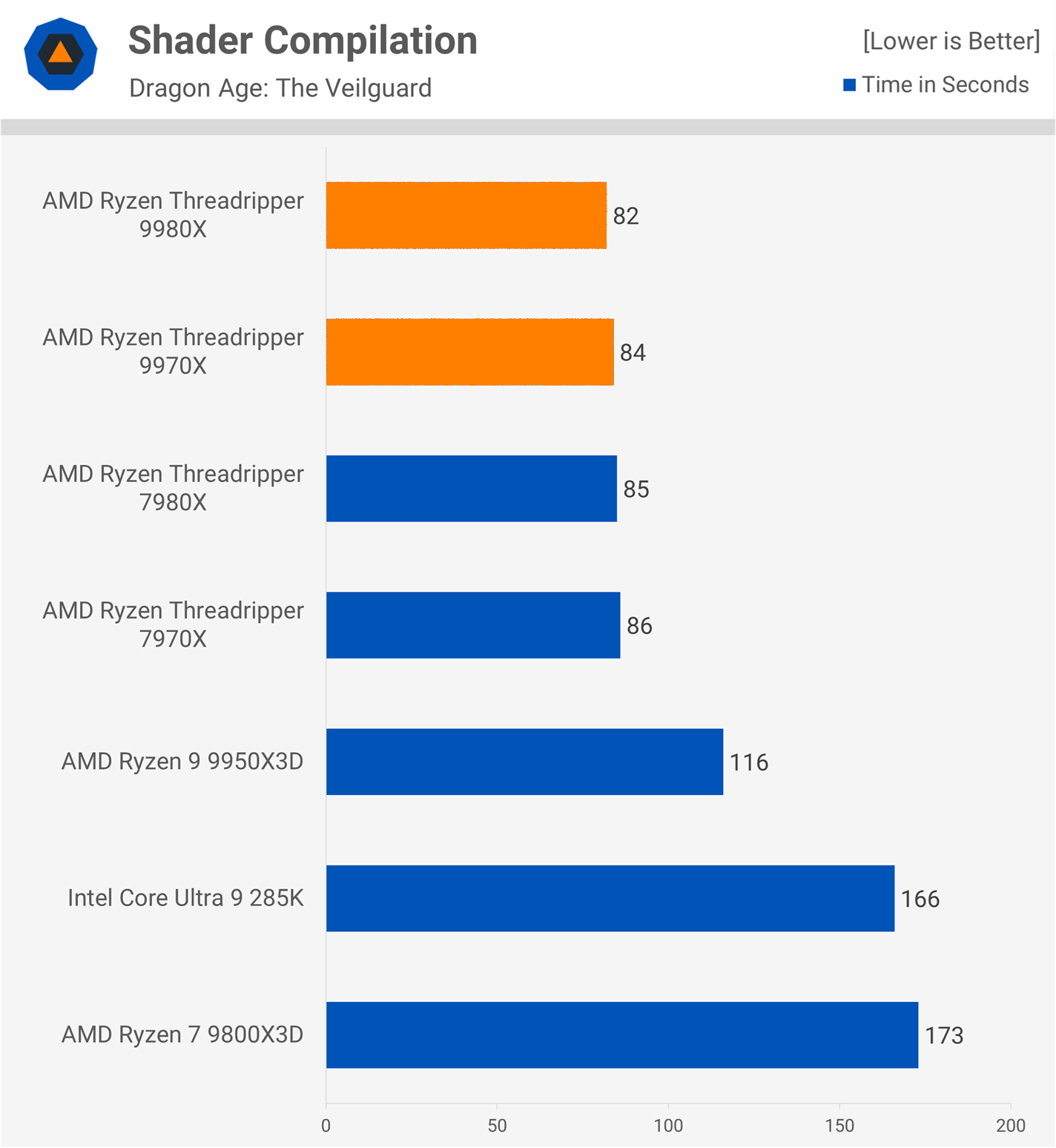
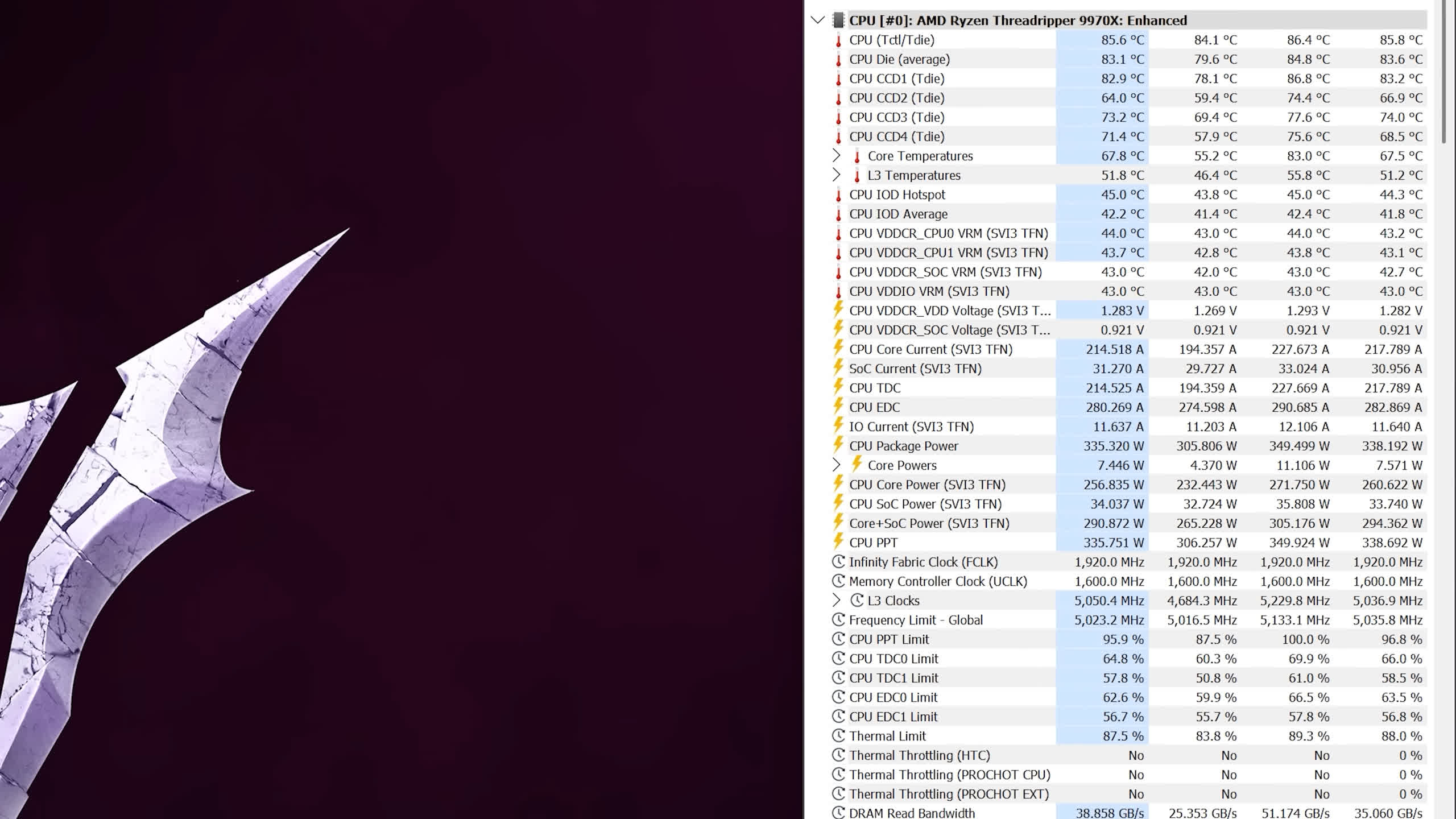
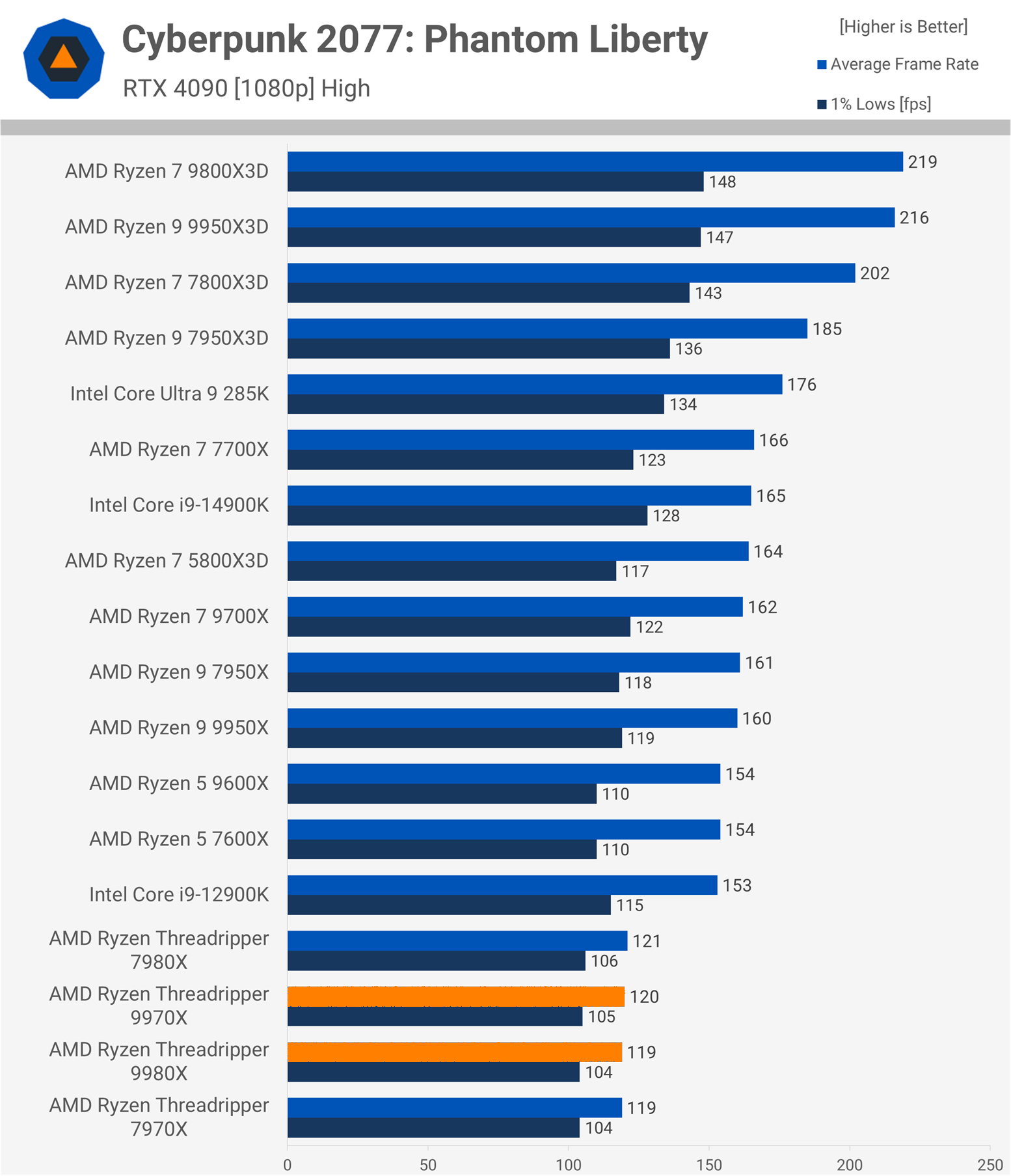
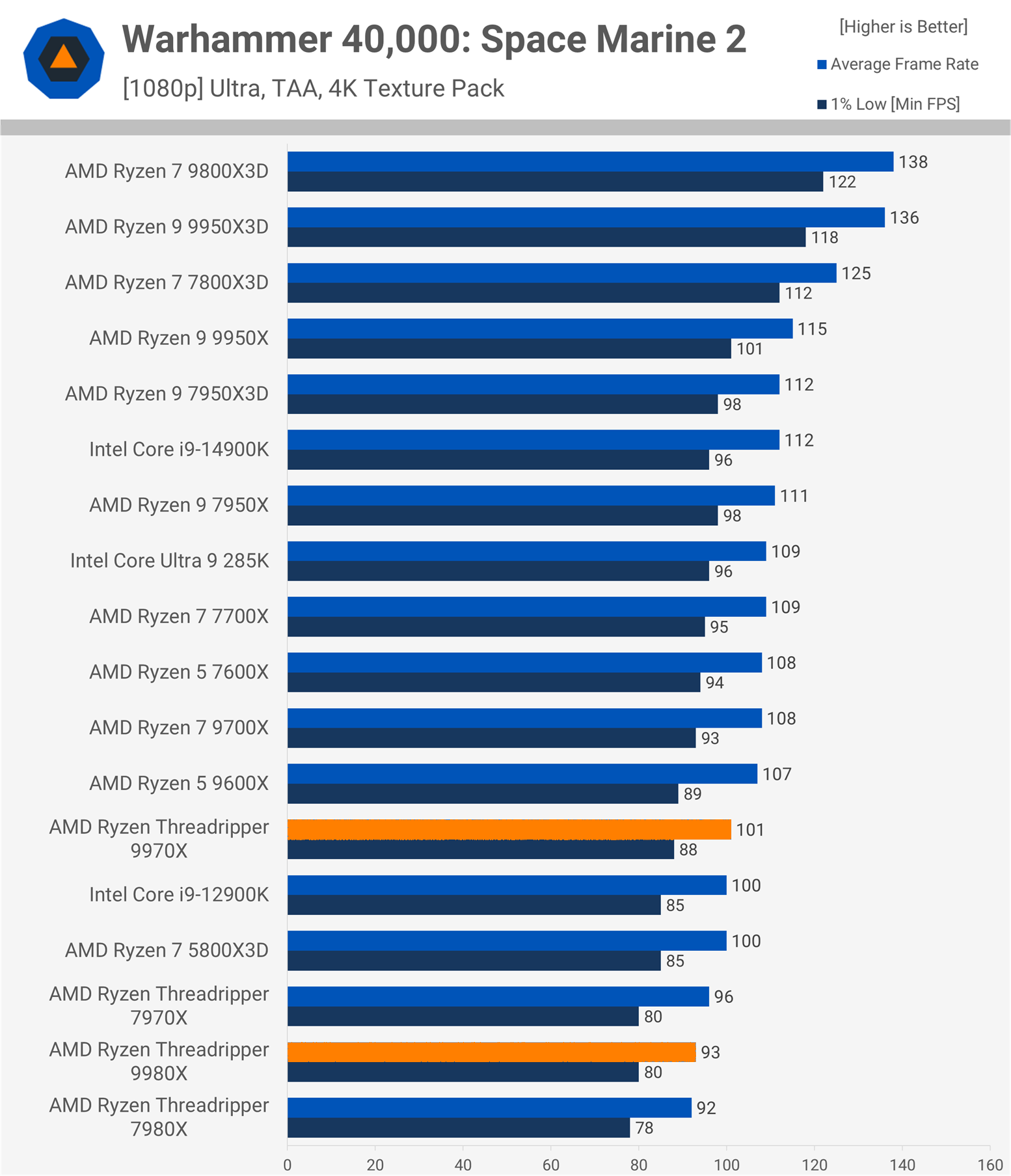
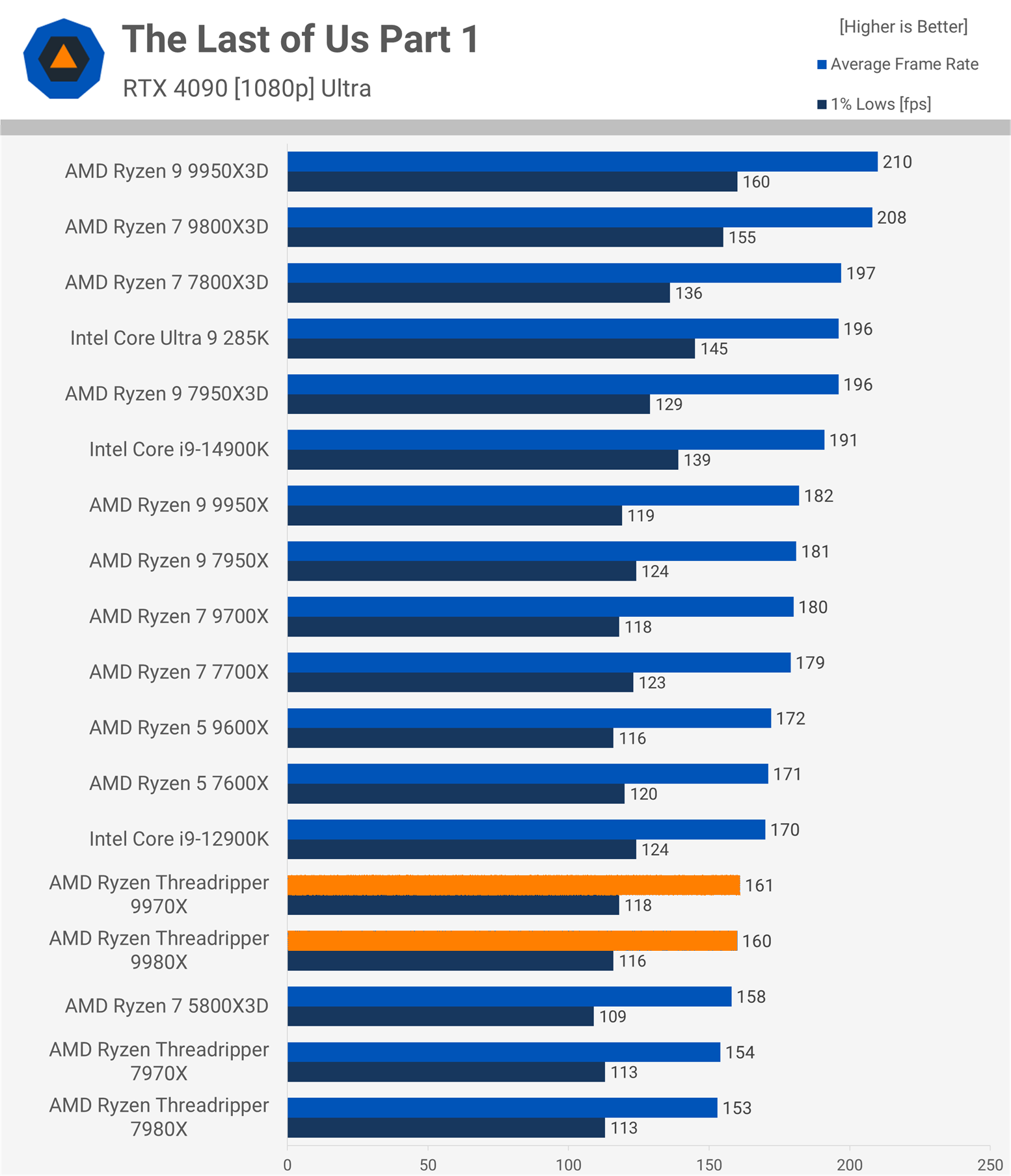
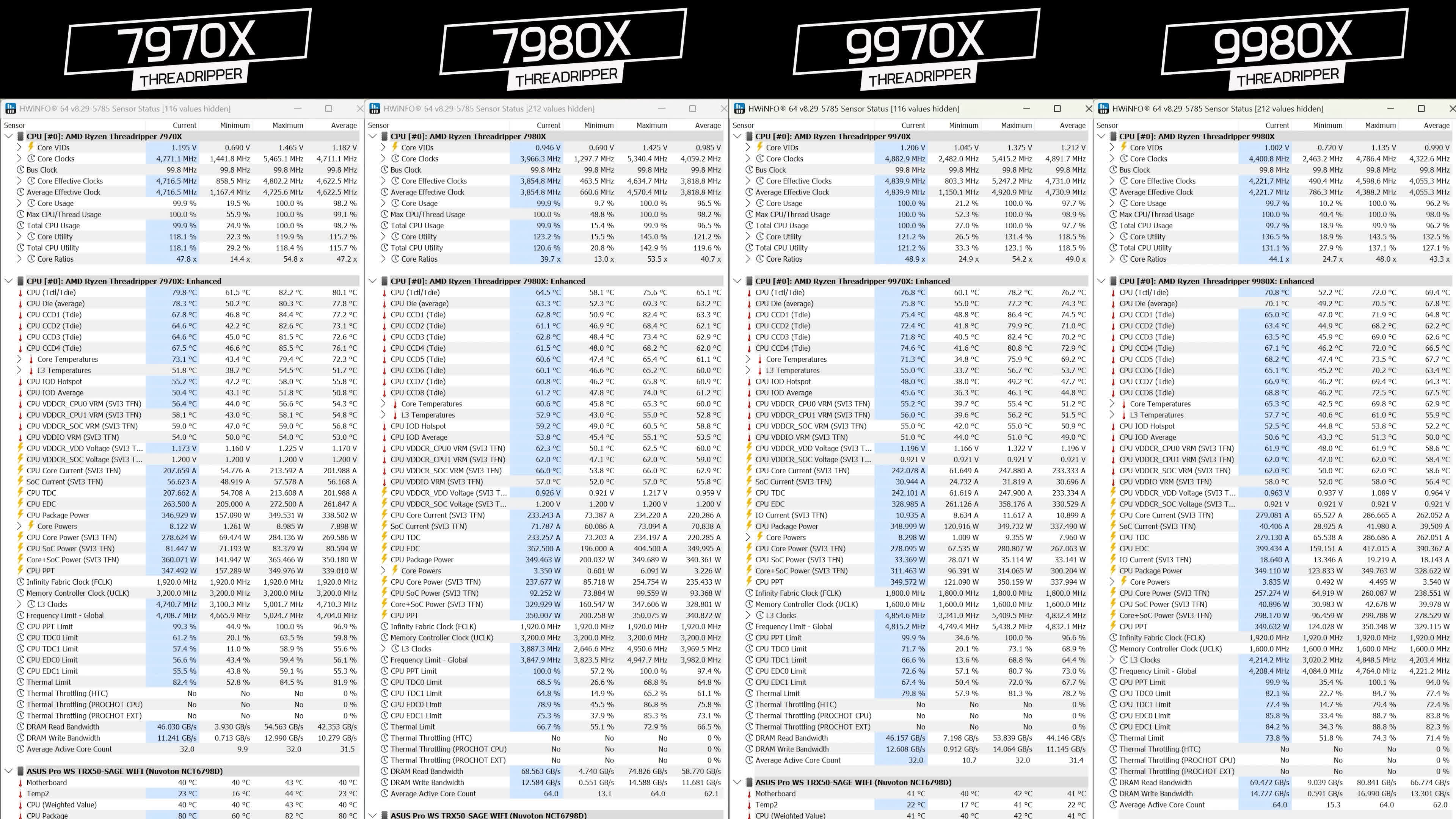
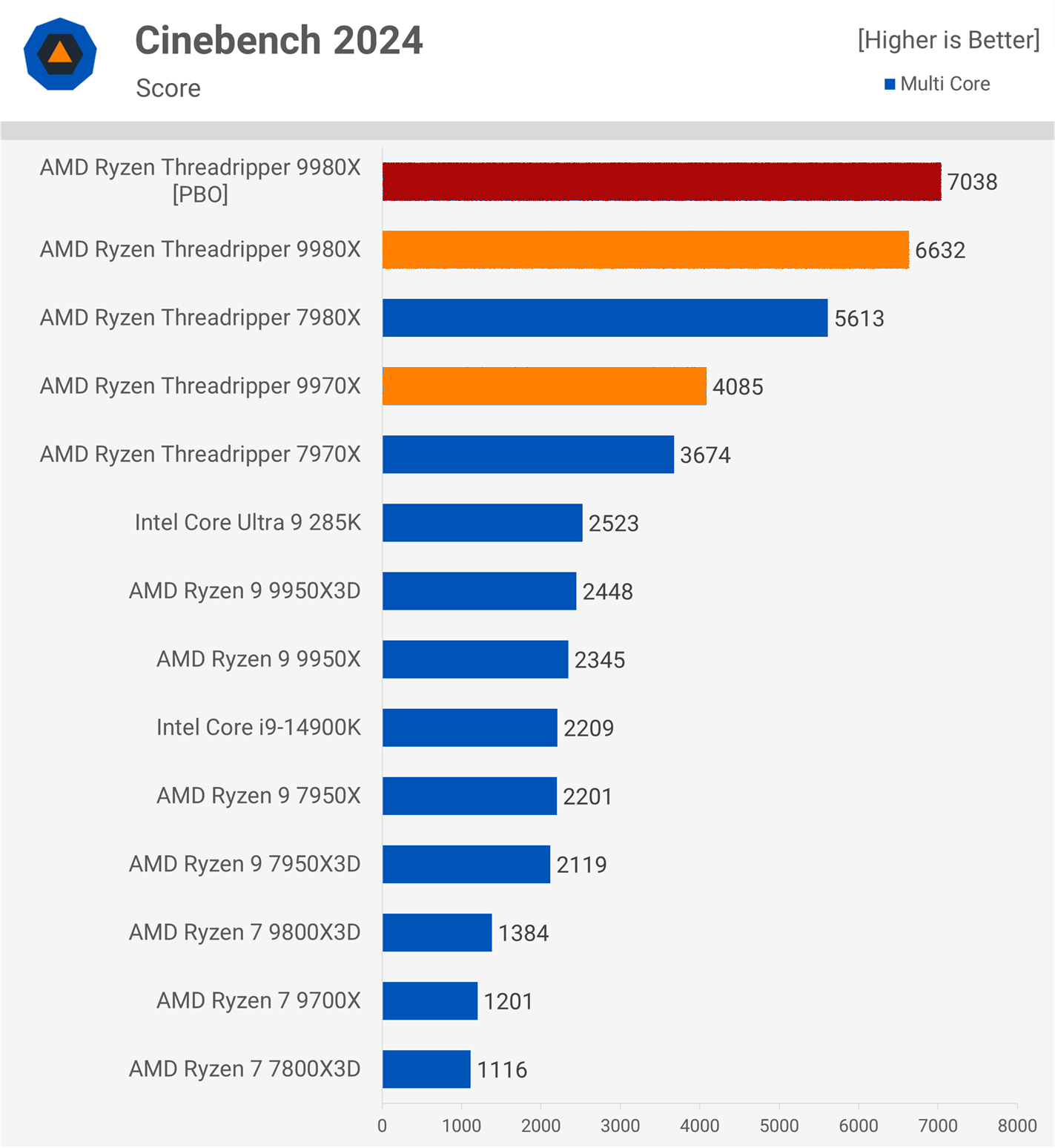
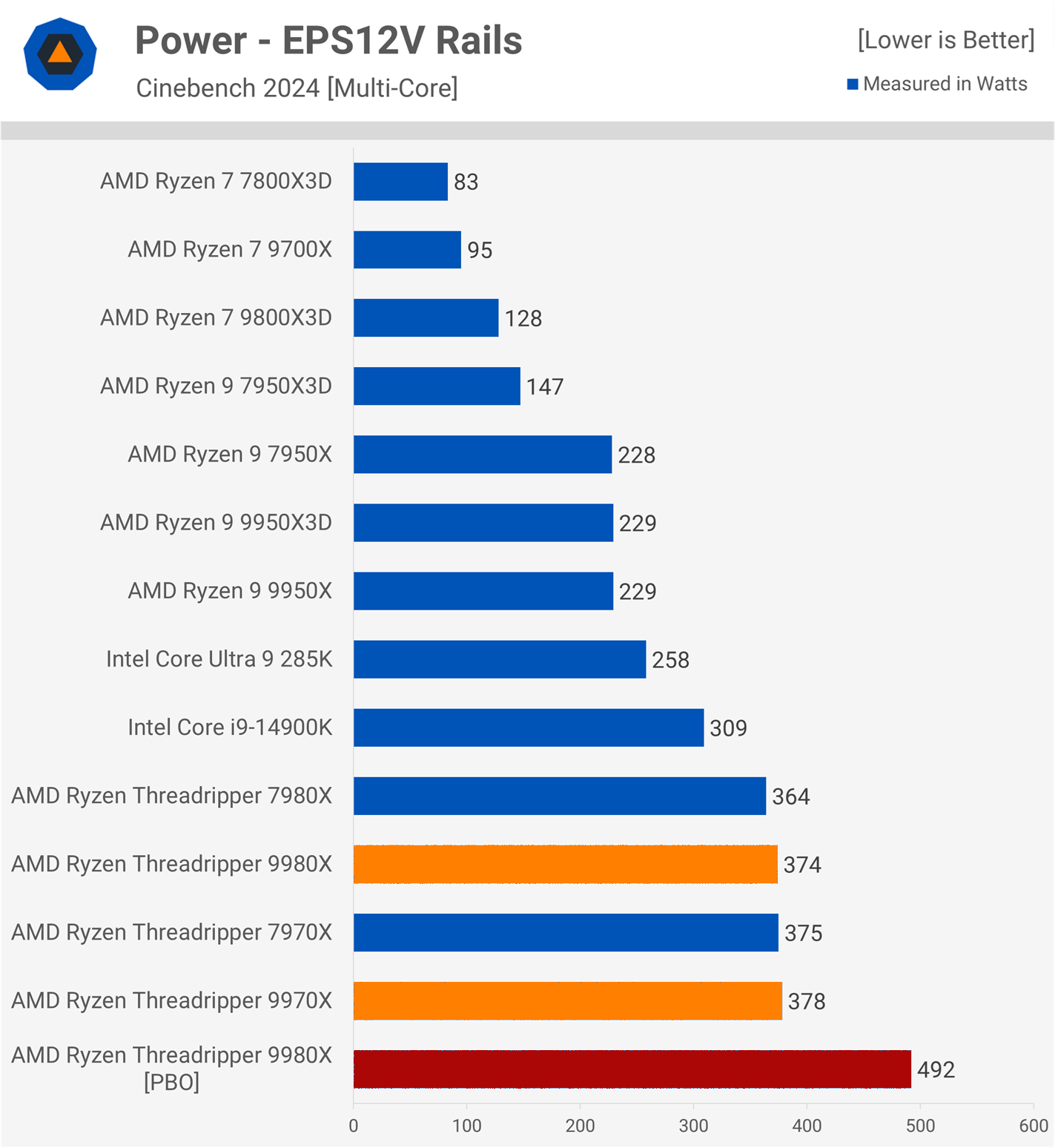
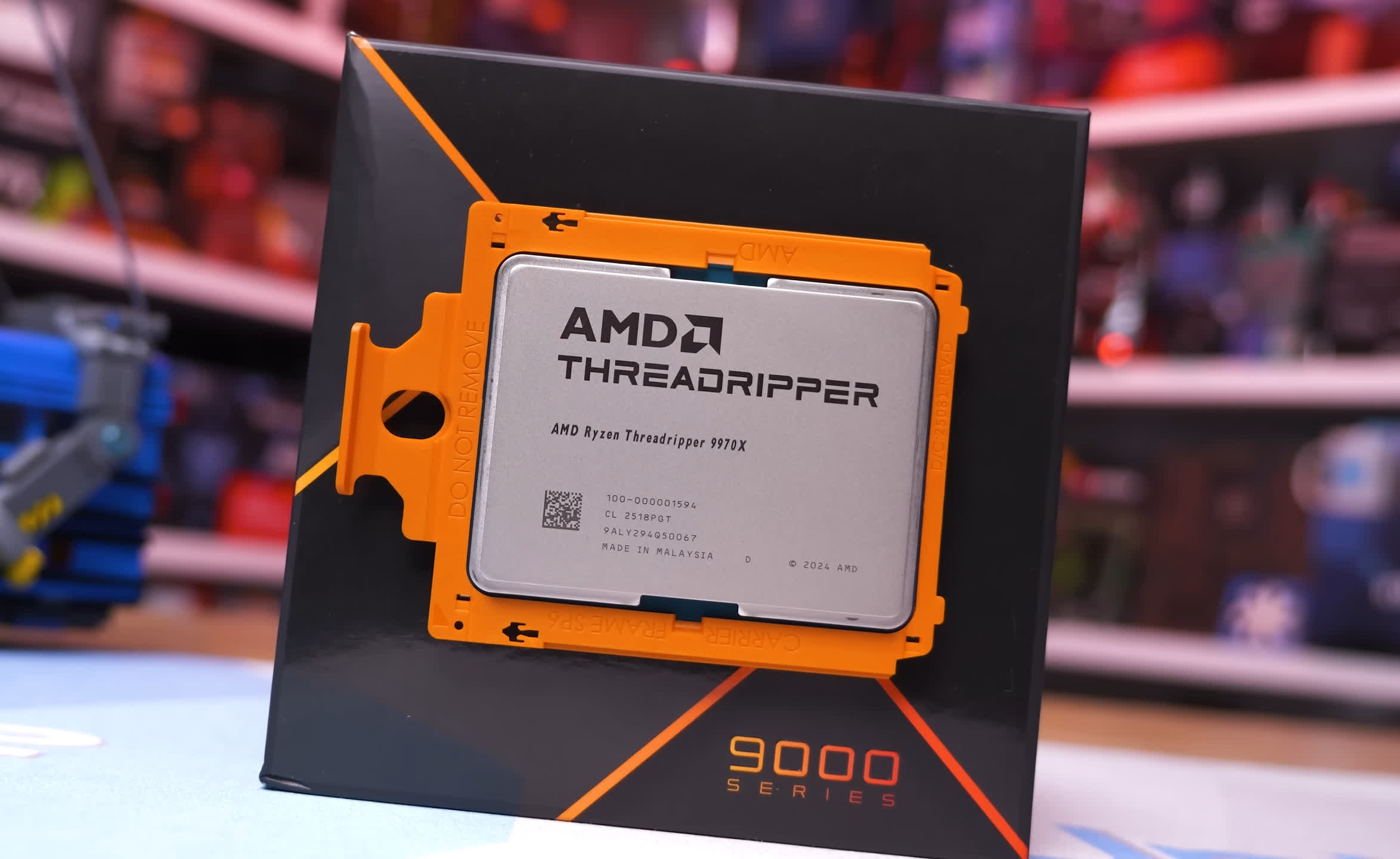
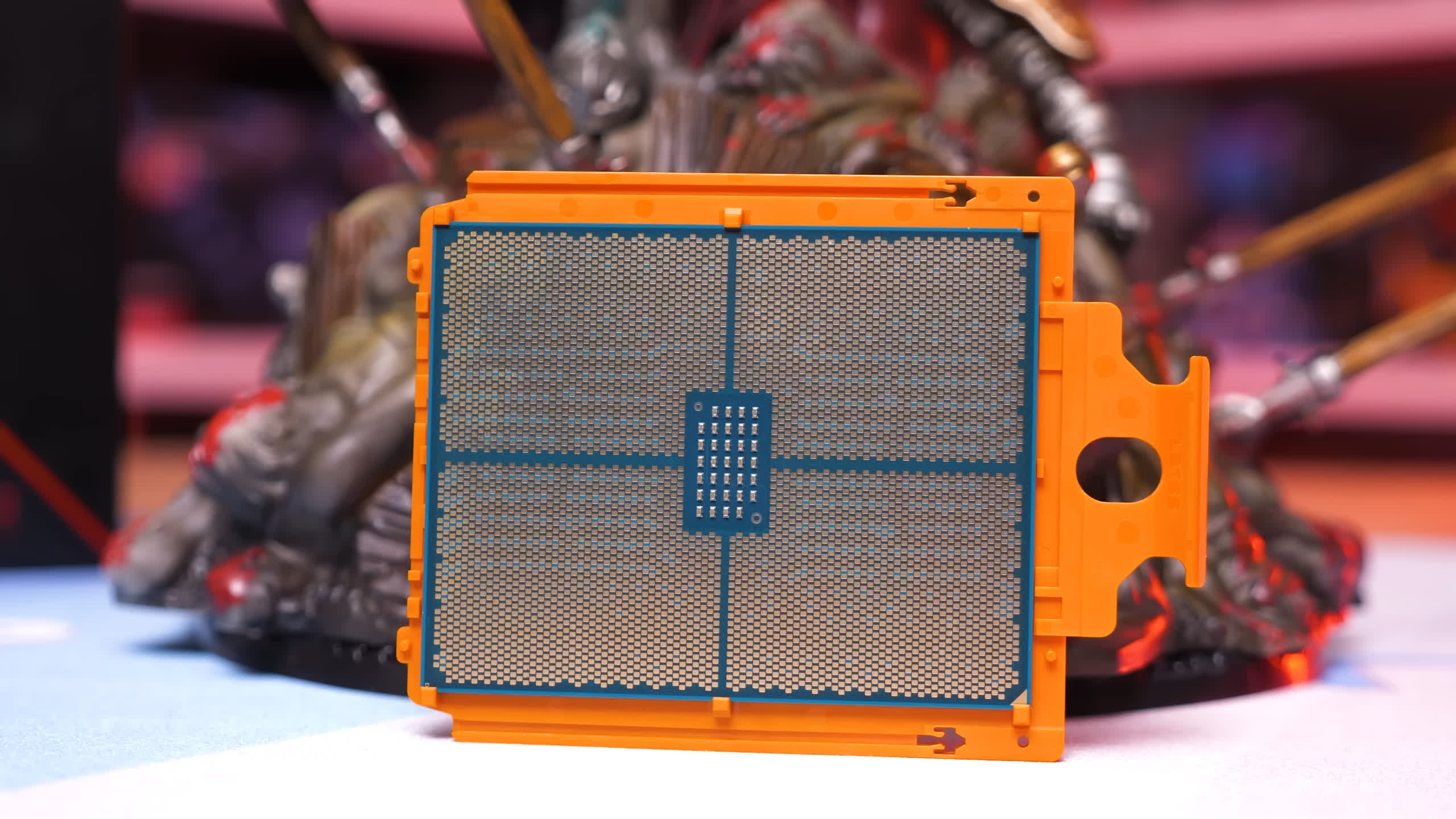
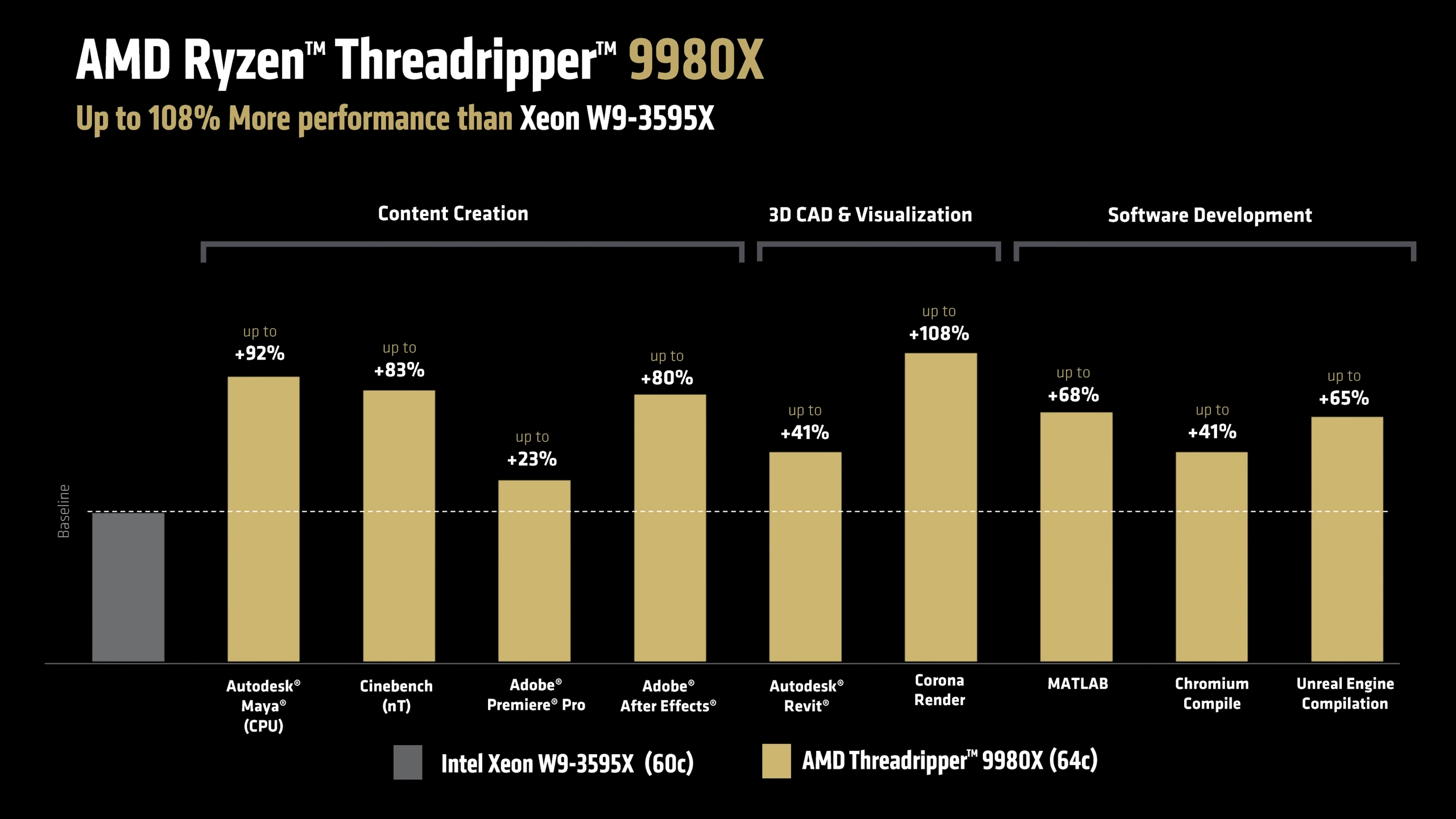
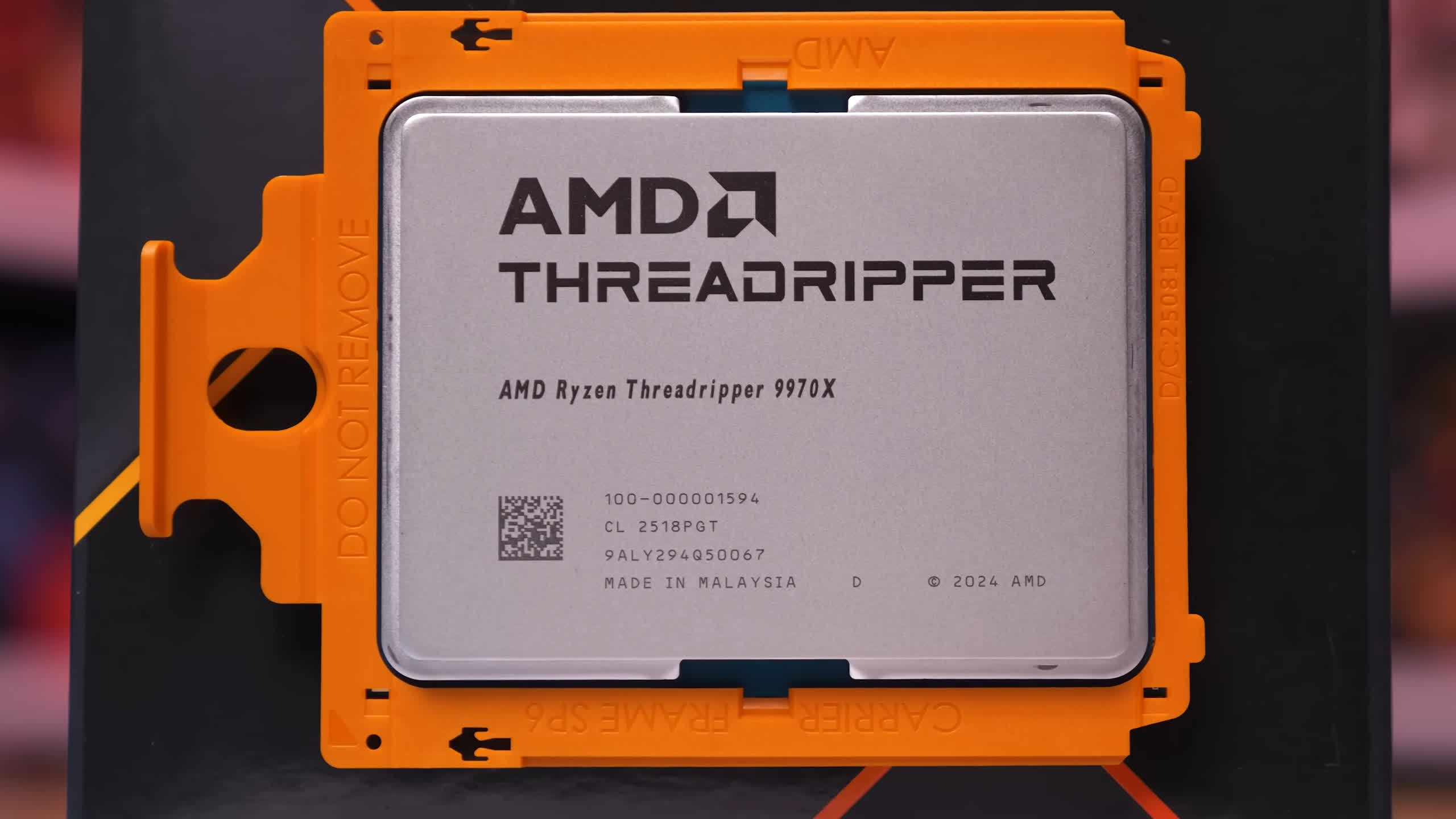

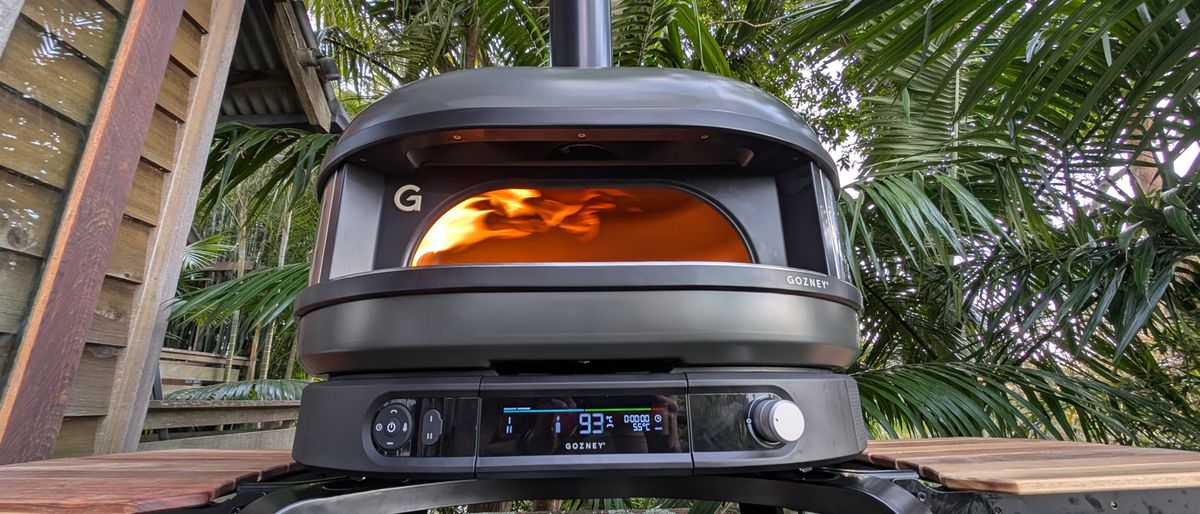
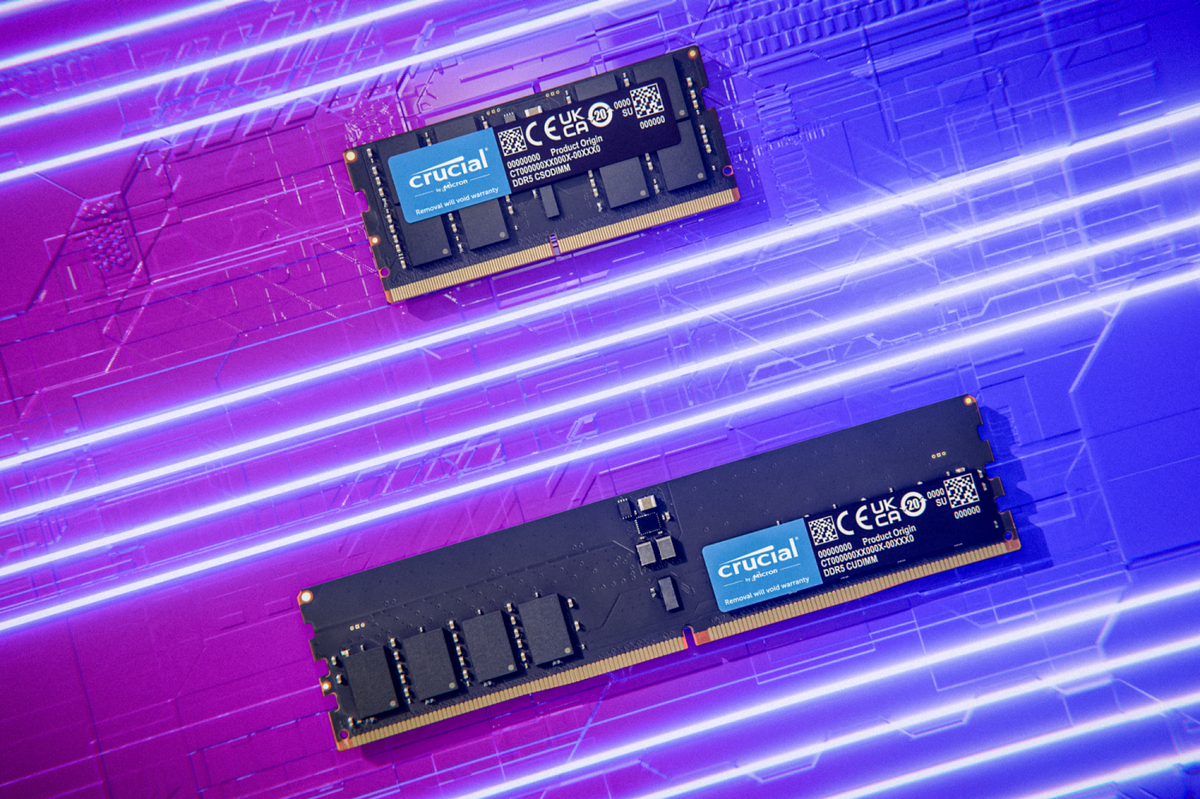
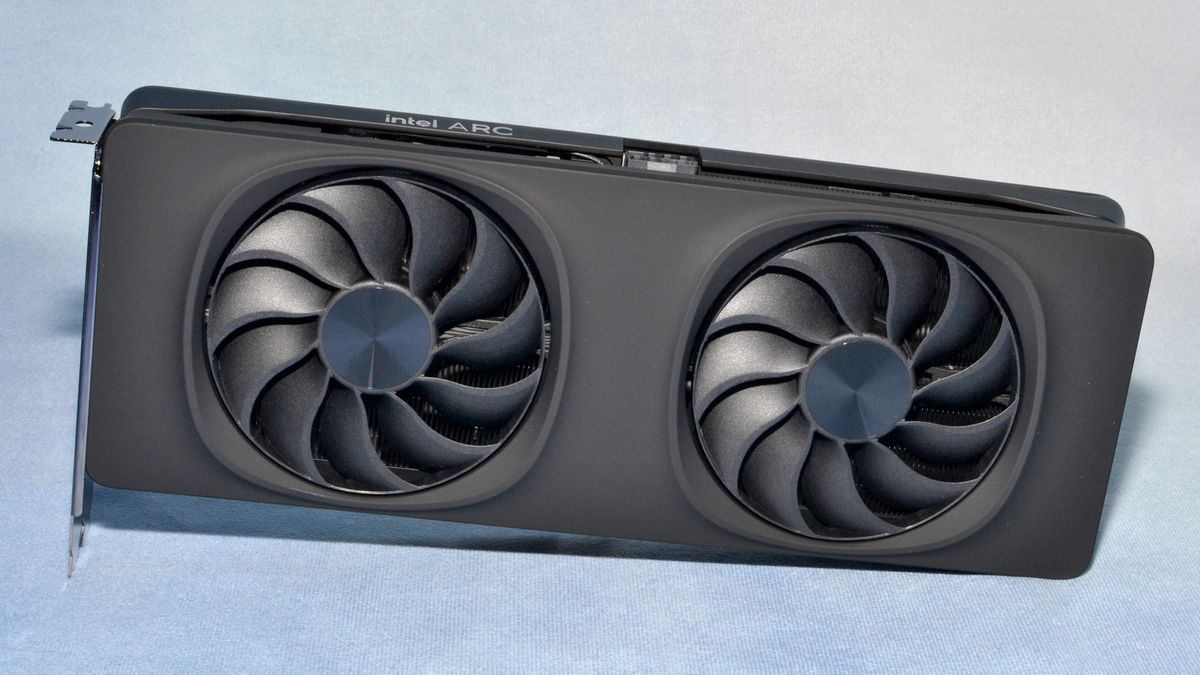

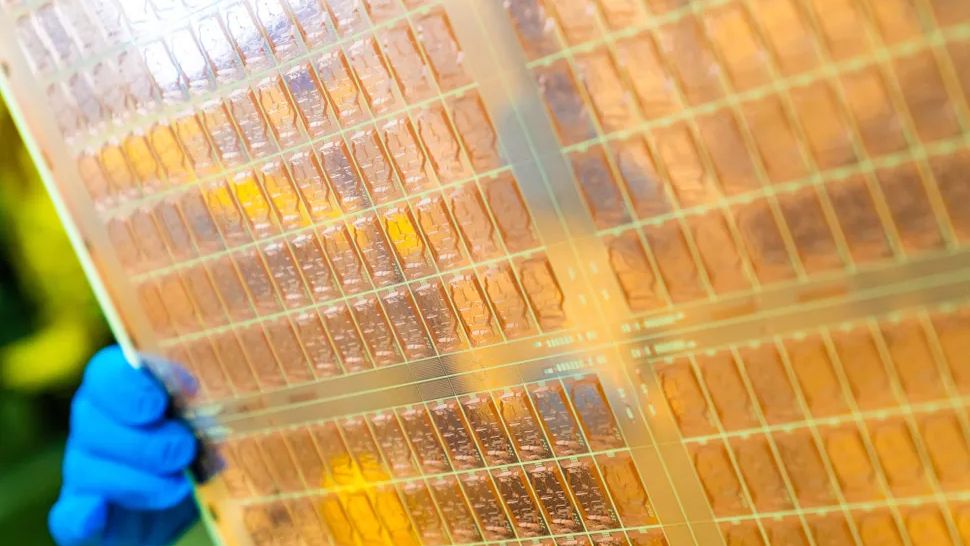

 English (US) ·
English (US) ·